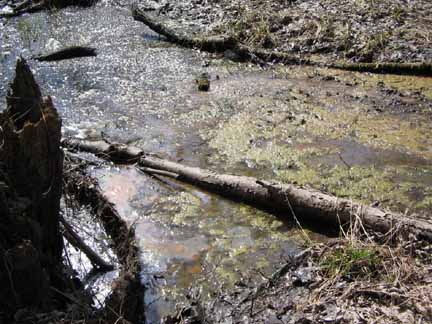 |
Ecology Vocabulary Exercise |
 |
Read the definitions. Categorize a species found in a wetland in your state or region. General Ecology article
Species (organism level) - An organism which has certain characteristics of a given population and is potentially capable of breeding with the same population defines a member of a species. This definition does not apply to asexually reproducing forms of life such as Monera, Protista, etc. Species can be considered the lowest (most specific) area of biological classification, but lower groupings are sometimes employed (e.g., subspecies, variety, race). Population - This term applies to organisms of the same species which inhabit a specific area. Community - A community is an aggregate of populations of different plant and animal species occurring within a given area. Habitat - A habitat is an area where a specific animal or plant is capable of living and growing; usually characterized by physical features, or the presence of certain animals or plants. Niche - This term applies to an organism's physical location and, most importantly, functional role (much like an occupation; what the organism specifically does) within an ecosystem. Ecosystem - As defined previously, a functioning natural unit with interacting biotic and abiotic components in a system whose boundaries are determined by the cycles and flux of energy, materials and organisms. Ecotone - An ecotone is a boundary ecosystem, specifically the ecosystem which forms as a transition between two adjacent systems. It may possess characteristics of both bordering ecosystems, while developing a suite of its own characteristics. Examples: Riparian zones, coastal forests. Biosphere - This is the surface zone of the planet earth, extending from within the earth's crust up into the atmosphere, within which all known l ife forms exist. Example: Ecological Levels From EPA Watershed Academy - Ecology - The Biological Setting - Table of definitions |
Use this vocabulary - Categorize a species found in a wetland in your state or region.
Explain - How would the loss of this species impact the ecosystem?
![]() Wetlands: Habitat / Mammals / Birds / Aquatic insects / Plants & trees / Amphibians
Wetlands: Habitat / Mammals / Birds / Aquatic insects / Plants & trees / Amphibians
Wetland Vocabulary Exercise / Wetland food web / Wetland Photos
Eagles Evaluation / School Habitat Garden Project / Competition Conundrum / Lentic or Lotic ecosystem?
Wetland or frog song activity / Wetland Poem Project / Water & Watershed Studies / Wetland Ecology Dilemmas
Bats are our Buddies / Bats at the Beach Activity / Firefly Watch - fun project / Monitor Wetland
Map PA Waters | Pennsylvania HS Envirothon | Plants and People | Map Wetlands in your Community
Posted 9/2008 by Cindy O'Hora Updated 2/2013, 5/2024
![]() Save a tree - How to make a Digital Answer Sheet: Highlight the text of the questions on this web page, copy them - Edit .. Copy. Open a text document or word processing document. Paste the questions into the blank document. Answer the questions in the word processing document in a contrasting color (NOT YELLOW) or font (avoid fancy fonts like:
Save a tree - How to make a Digital Answer Sheet: Highlight the text of the questions on this web page, copy them - Edit .. Copy. Open a text document or word processing document. Paste the questions into the blank document. Answer the questions in the word processing document in a contrasting color (NOT YELLOW) or font (avoid fancy fonts like: ![]() , Symbol,
, Symbol, ![]() or
or ![]() ). Save frequently as you work. I do not like losing my work. You will not like it either. Submit your assignment via an electronic class dropbox or email attachment. Save a copy of your work on your computer.
). Save frequently as you work. I do not like losing my work. You will not like it either. Submit your assignment via an electronic class dropbox or email attachment. Save a copy of your work on your computer.
Proof your responses. It is funny how speling errors and typeos sneak in to the bets work. ![]() Make Your Own Printed answer sheet.
Make Your Own Printed answer sheet.
Pennsylvania Science Anchors Science NetLinks Benchmark 5 - The Living Environment - How living things function and interact. A. Diversity of Life D. Interdependence of Life - " In all environments freshwater, marine, forest, desert, grassland, mountain, and others organisms with similar needs may compete with one another for resources, including food, space, water, air, and shelter. |